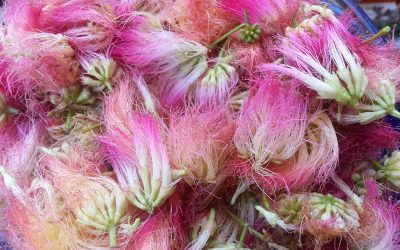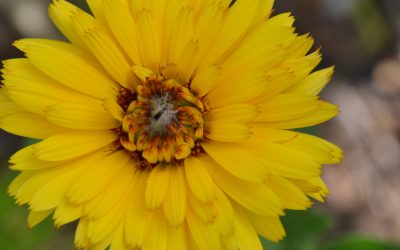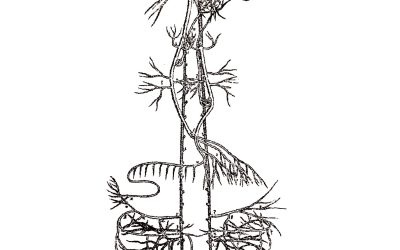
Rocky Mountain Mushrooms – Hawk’s Wings (Sarcodon imbricatus)
With its brown cap layered with dark, protruding scales, this large mushroom does indeed resemble a hawk’s wing. As for the botanical name, sarco is derived from Greek for “flesh”, while odon means “tooth”. This is in reference to the tooth-like projections beneath the cap. There are only a handful of “toothed” mushrooms in the Southern Rockies, making identification of this sometimes humongous mushroom even easier.
This is a common mushroom in the Southern Rockies and it grows under spruce, in association with the tree’s roots. In this mutually beneficial “mycorrhizal” relationship, the fungus helps the tree absorb water and nutrients from the soil and the tree provides carbohydrates to the fungus.

Join Marija for Medicinal Mushroomery Class Live Online: February 28, 2023
While many Sarcodon species are too bitter to eat, some folks swear by Hawk’s Wings. In Bulgaria, they’re dried and ground to use as an aromatic flour (1), and they’re eaten in China as well (2), where they’re known as Wild Deer Mushroom (3). A Rocky Mountain mushroom guide notes that some people may become mildly ill from eating Hawk’s Wings (4), though a guide the following year co-authored by the same person lists it as a “good, solid edible” (5). I’ve not experienced any ill effects, nor have the people I know who eat it. That said, be cautious and start out with just a little bit at first. Some people may react to a mushroom that everyone else seems to be able to eat without an issue. Also, make sure to thoroughly cook the mushroom before eating it, which is a good rule-of-thumb for mushrooms in general. Some folks find the taste bitter and unpleasant, especially with larger mushrooms. A student recently described the taste as soapy. Others rank it as one of their favorite wild mushrooms.
I’ve found a way that I really like this mushroom: as a pâté with caramelized onions. This is great on crackers or bread, mixed in with an alfredo sauce, or just as is via the spoonful. The pâté has a rich, umami flavor. An aside, I’ve heard good things about using Hawk’s Wings for stroganoff recipes.
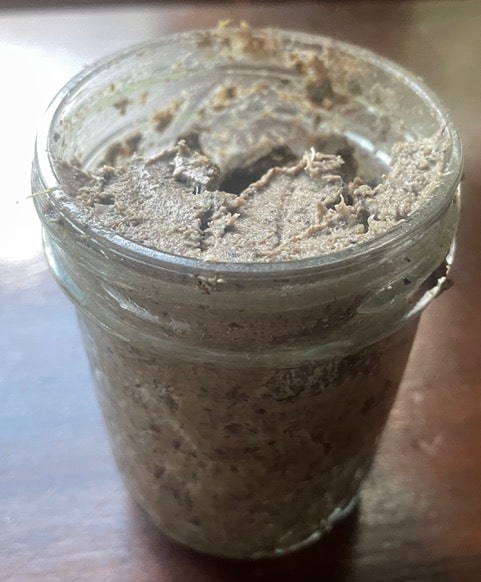
Hawk’s Wing (or other mushroom) Pâté
Caramelize 1/2 cup chopped onions. In a separate pan, sauté 2 cups chopped mushrooms on medium heat as follows. Add a single layer of mushroom slices to the preheated pan, sprinkle with a bit of salt, and cook until they just start to shrink and brown. Remove them and set aside. Repeat this process until you’ve “dry sautéed” all the mushroom slices. Combine the mushrooms and onions, add 1 tsp extra virgin olive oil and 1 tsp butter or ghee and continue cooking on medium heat for ~ 5 minutes. Add salt and pepper to taste. Add a pinch each of fresh or dried thyme and fresh parsley. After the mushrooms have soaked up the oil and the pan surface is starting to dry, deglaze with vodka or dry vermouth and cook for a couple more minutes to reduce the liquid to almost dry again. Transfer to blender or food processor and puree until smooth. Store in a clean glass jar in the fridge. Use within a week. (I’ve never had it around that long before finishing it…)
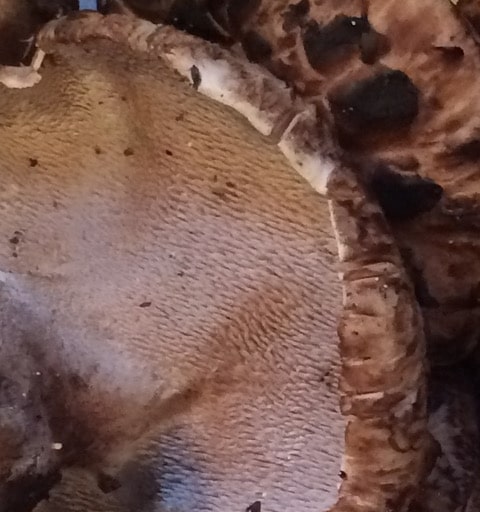
In China, the closely related species S. aspratus is used as a muscle relaxant, for lowering cholesterol, and for circulatory support (1). Some references consider S. imbricatus and S. aspratus the same species, but a genetic study found them to be related but distinct species (6). In the lab, rodent studies on the possible medicinal effects of Hawk’s Wing itself (S. imbricatus) have found an influence on the immune system (7), anti-tumor effects (8), and an ability to counter fatigue (9). It’s important to remember, along with the ethical issues, that we aren’t rodents. Many aspects of our physiology differ, so such results may or may not reflect the reality in humans.
A note on sustainability… A decline in Hawk’s Wing populations has been reported in North America and Europe, and the decline was attributed to habitat loss and pollution (10). I’ve not noticed a change in Hawk’s Wing fruiting in the San Juan range since arriving here in 2010. It remains one of the more common mushrooms I encounter once monsoon season starts. That said, don’t harvest every Hawk’s Wing that you see. Mushrooms are the reproductive structures of the fungal organism (the mycelium) that lives, in this case, underground. While (carefully) picking a mushroom doesn’t kill the fungus, if all the mushrooms in an area are picked each season, it may negatively impact the population due to reduced reproductive capacity. Also, take care of the habitat: don’t stomp around and possibly damage the mycelia or primordia (the tiny mushroom precursors barely sticking up from the ground). Clean up any garbage encountered; there’s a surprising amount, even pretty far into the woods.
A final note: Be safe. Know your mushroom identification 100% or else don’t eat the mushroom. And have fun.
Dr. Anna Marija Helt is an herbalist based in Durango, Colorado. She offers in person and online herbal consultations for health and will be practicing in Albuquerque once a month starting in March, 2023. She can be contacted through www.osadha.com or marija@osadha.com for inquiries. Students that have taken any of her classes through Albuquerque Herbalism receive 10% off for a first consultation.
References
-
- Marcotullio, MC (2011) Chapter 3: Sarcodon Mushrooms: Biologically Active Metabolites. Phytochemicals – Bioactivites and Impact on Health. 77-94.
- Ying, J, et al (1987) Icons of Medicinal Fungi from China. pp96-97. Translated by Y Xu. Science Press. Bejing, China.
- Chen, M-M (2010) Fungi Treasure: Wild edible mushroom collection and identification. University of California, Berkeley and Jepson Herbaria.
- Stucky Evenson, V & The Denver Botanic Gardens (2015) Mushrooms of the Rocky Mountain Region. Timber Press, Portland, OR.
- Cripps, CL, et al (2016) The Essential Guide to Rocky Mountain Mushrooms by Habitat. University of Illinois Press, IL.
- Vizzini, A, et al (2013) Molecular validation of Sarcodon quercinofibulatus, a species of the S. imbricatus complex associated with Fagaceae, and notes on Sarcodon. Mycological Progress. 12(3):465-74.
- Meng, F, et al (2017) Investigation on the immunomodulatory activities of Sarcodon imbricatus extracts in a cyclophosphamide (CTX)-induced immunosuppressed mouse model. Saudi Pharm. J. 25(4):460-3.
- Tan, X, et al (2020) Anti-tumor and immunomodulatory activity of the aqueous extract of Sarcodon imbricatus in vitro and in vivo. Rood Funct. 11:1110-21.
- Wang, X, et al (2018) Antifatigue potential activity of Sarcodon imbricatus in acute exercise-treated and chronic fatigue syndrome in mice via regulation of Nrf2-mediated oxidative stress. Ox Med Cell Longev. Article ID 9140896.
- https://iris.unito.it/bitstream/2318/124757/1/944425%20_%20Mycological%20Progres.pdf)

